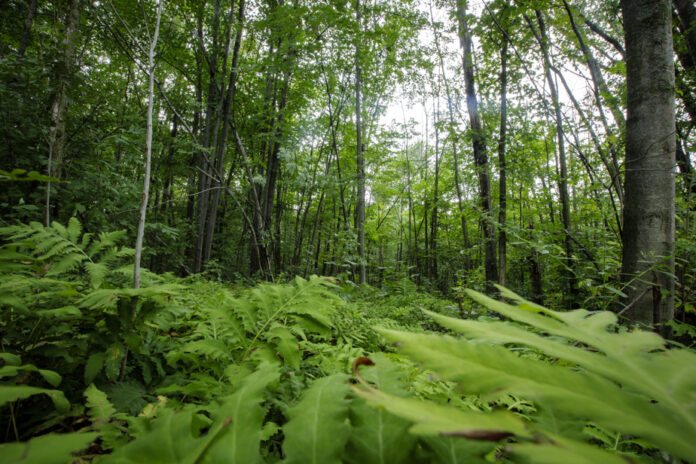Should we rely on data from the Government of Quebec to carry out ecological inventories? Documents obtained by La Presse show that the reports produced by the Quebec Natural Heritage Data Center should be taken with a grain of salt.
Since 1988, the Quebec Natural Heritage Data Center, better known by the acronym CDPNQ, has been compiling information from various sources and integrating it into a centralized database.
Little known to the public, the CDPNQ nevertheless plays a central role in the environmental assessments submitted by developers and municipalities to obtain authorization from the Ministry of the Environment.
However, the reports produced by the CDPNQ are far from reliable, according to the very admission of the officials who sign the documents sent to the people or organizations that have filed requests for information.
For example, in a response sent to biologist Mario St-Georges in November 2016, civil servant Mélissa Lamoureux, from the former Ministry of Forests, Wildlife and Parks (MFFP), writes that “since 1988, data from different sources (specimens from herbariums and museums, scientific literature, recent inventories, etc.) are gradually being integrated into the data management system”.
Ms. Lamoureux was then responding to a request for information from the biologist of the Group for Research and Studies in Biostatistics and the Environment (G.R.E.B.E.). This private firm carried out an ecological assessment of the Boisé Rousseau, in Pincourt, targeted by a subdivision project in 2016.
“Thus, the database does not distinguish between the portions of territories recognized as being devoid of such species and those not inventoried. For these reasons, the opinion of the CDPNQ concerning the presence, absence or status of species at risk in a particular territory is never definitive and should not be considered as a substitute for the field inventories required in part of environmental assessments,” she adds.
It should be remembered that, in the context of an ecological assessment, the standard procedure provides for requesting information from the CDPNQ before carrying out inventories in the field. However, not all biologists carry out exhaustive inventories before producing their report, revealed a recent survey by La Presse.
Since March 2022, it is no longer necessary, in most cases, to submit a request for information to the CDPNQ to obtain data. These are now available on an internet portal accessible to all.
However, a warning is published as soon as the portal is accessed.
“The absence of an occurrence listed for a territory does not mean that there are no species in a precarious situation. The presence of occurrences of certain species does not exclude the presence of other unlisted species. The result should therefore not be considered definitive and does not represent a substitute for the required inventories. »
“The CDPNQ data is mainly used to guide our research and prepare our inventories in the field,” explains biologist Kim Marineau, president of the firm Biodiversité conseil. Based on the data obtained, a biologist can also better determine what time of year he will go into the field, she adds.
“Never assume, however, that [CDPNQ] data provides the complete picture. In any case, it is absolutely necessary to complete with field studies, “explains the biologist who has 30 years of experience in the field.
According to Tommy Montpetit, director of conservation at Ciel et Terre, you have to be very careful with the data provided by the CDPNQ. He says he has already received a response to a request for information, which reported the presence of a rare plant in the heart of Longueuil, where Curé-Poirier Boulevard is now. “This is historical data that is no longer valid. I have often seen it in responses from the CDPNQ. »
According to biologist Dominique Gravel, several regions of Quebec are not covered by the CDPNQ.
Even in southern Quebec, CDPNQ data should be viewed with caution, adds Gravel, who holds the Canada Research Chair in Integrative Ecology.
“The government is not very proactive in collecting data. There is no follow-up, says Gravel. It is a process that is done by opportunism. That is to say, we collect the data provided by third parties and integrate it into a centralized database.
According to the experts consulted by La Presse, the CDPNQ would have a delay of several years in the entry of the data provided to it. “The Government of Quebec does not currently have the means to do the necessary follow-up,” says Dominique Gravel.
According to him, the fact that the data is now available on an internet portal should however give more time to the CDPNQ team, which will no longer have to respond to many requests for information.
“It is quite normal to observe a discrepancy between the observation data submitted to the Ministry and the integration of this information with the occurrences of the CDPNQ,” said Daniel Labonté, public relations officer at the Ministry of the Environment, the Fight against Climate Change, Wildlife and Parks (MELCCFP). “While this gap may have been greater in the past, it has narrowed a lot thanks to the staffing put in place. More than fifteen people currently work at the CDPNQ.


















